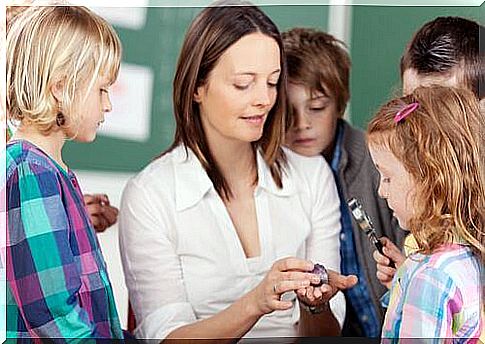Conceptual Change Theory: How To Teach Science?

Certain science-related school subjects require a lot of cognitive effort. This is mainly because students need to understand the content deeply, which current pedagogical methods do not necessarily help students achieve. In this context, conceptual change theory aims to help teachers teach science better.
Students have intuitive theories about the world. Children do not come to school as empty vessels. Before receiving information that describes the world around them, they have already theorized their own explanations.
More often than not, their intuitive theories are flawed and conditioned by the newly developed material. It is important that teachers take this into account when it comes to educating children.
Stages of conceptual change theory
In this article, we will demonstrate how to develop a deep understanding of science. For this we must understand the three stages of conceptual change theory:
- Recognition of an anomaly.
- Construction of a new model.
- Use of the new model.

Recognition of an anomaly
This is the first step in helping students develop a deep understanding of a concept. The teacher’s job is to break apart the student’s intuitive theories. Students must abandon their old ideas and discover that they were wrong.
If students do not let go of their intuitive theories, their learning process will be affected and they will reject the new information. On many occasions, this stems from superficial learning of science that will not make the student feel obligated to leave their intuitive theory behind.
Direct experimentation can help students realize that their intuitive theory is wrong, with their own senses. This allows them to recognize the discrepancy.
Teachers can also help students realize that they were wrong by attacking wrong ideas in a healthy and respectful dialogue. This method is very useful and can help students see the facts in a critical way.
Construction of a new model
Once the student’s intuitive theory is broken apart, the next step is to give them a new explanation. An important aspect of this step is that they have to build the new model themselves.
If a teacher only introduces the new concept to the class, it would be difficult for the students to really understand it. They will most likely develop superficial learning based on memorization.
Constructivist paradigms suggest that the student is the one who needs to build up his knowledge. Thus, the role of teachers is to guide students as they explore different possibilities. This is a complicated process, but it gives amazing results.
It is more complicated in a classroom because it means the teacher has to apply this to many students at once. A good way to do this is through debates.
The students themselves create their own models to disprove and argue for their views. In this case, the role of the teacher is to prepare the material and necessary resources for the debate.
This step is the most difficult in conceptual change theory since it is where students begin to truly understand topics.

Use of the new model in conceptual change theory
It would not make much sense to break away from erroneous views if one does not build a model to be used in future problems. Therefore, the last step in the process is to teach students to use their theory. For this, students must perform exercises where they can use this new model. On the other hand, it is important to integrate this new model with previous knowledge.
Conceptual change theory is a valid learning method that gives incredible results. If we want to ensure that students really understand the material and know how to use it in a critical and constructive way, we should use this type of educational tool in the classroom.









